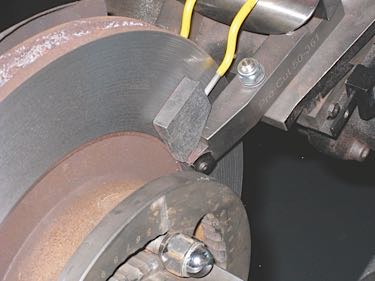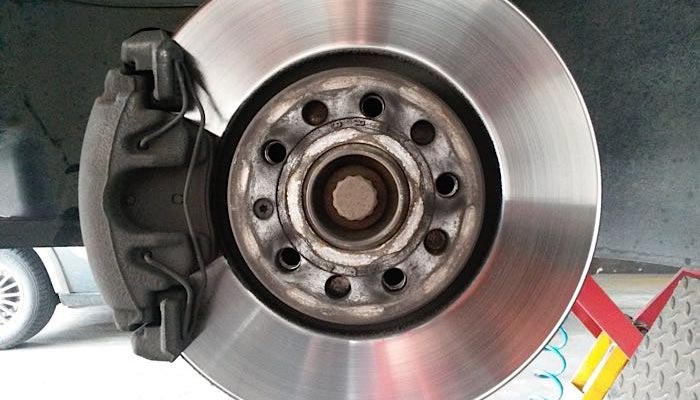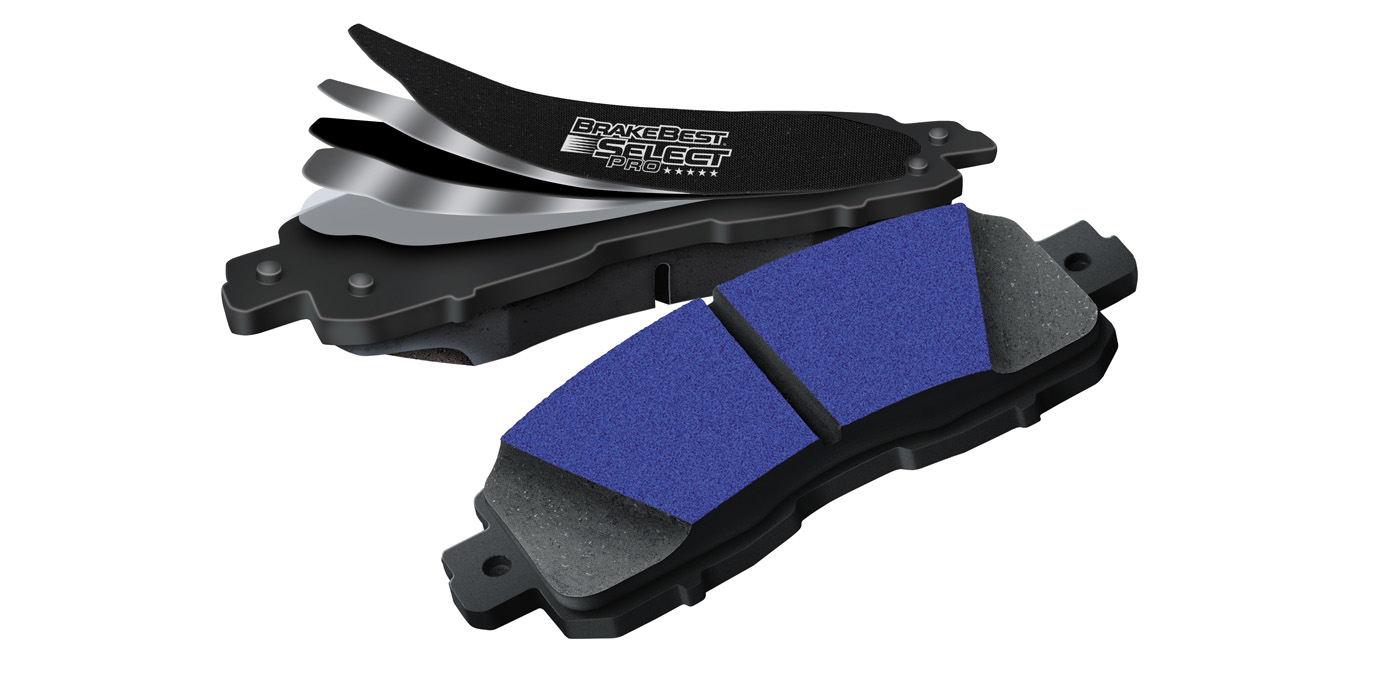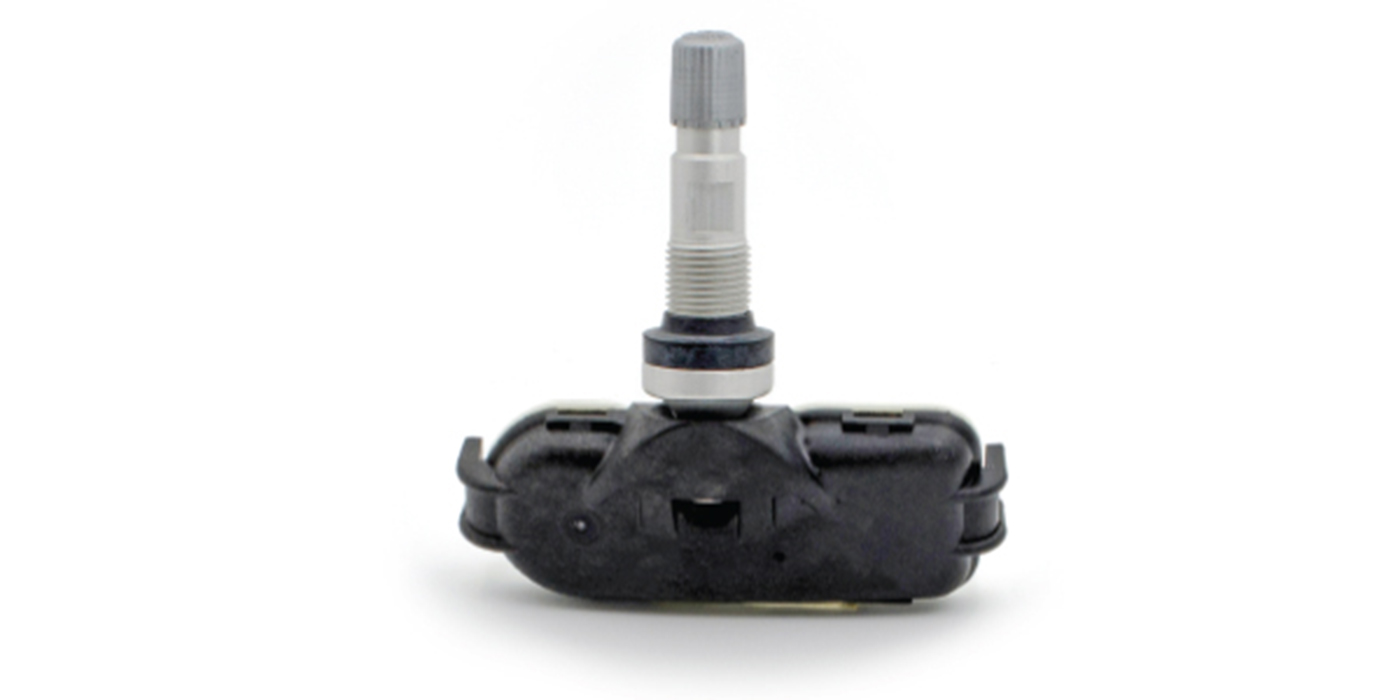 Back in the day, a non-directional rotor finish was the method used to solve a common problem that occurred on bench brake lathes. If the cross-feed speed on some lathes was too fast, the rotor became the record and the pads became the needle that followed the grooves in the record. This would cause a clicking noise as the pads moved in the caliper. Today, a non-directional or post-lathe surfacing process still serves the same purpose, but it also helps in the bedding of some friction formulations.
Back in the day, a non-directional rotor finish was the method used to solve a common problem that occurred on bench brake lathes. If the cross-feed speed on some lathes was too fast, the rotor became the record and the pads became the needle that followed the grooves in the record. This would cause a clicking noise as the pads moved in the caliper. Today, a non-directional or post-lathe surfacing process still serves the same purpose, but it also helps in the bedding of some friction formulations.
The surface finish of a new or resurfaced rotor should meet OEM specifications for good braking performance, pedal feel and quiet operation. Brand-new OEM rotors and aftermarket rotors from a quality supplier typically have a surface finish that can vary from 15 to 80 microinches. Most brake experts say the best finish is 50 microinches or less, though a finish in the 60- to 80-microinch range is acceptable.
When a rotor is turned on a brake lathe with sharp bits (we emphasize the word “sharp” because it is absolutely essential to a quality rotor finish), and a feed rate that is not too fast, the rotors will have a finish that meets these recommendations. Dull bits and fast feed rates tear chunks of metal from the rotor instead of properly cutting it as they should.
If you turn your rotors with sharp bits, and the proper feed rate and depth of cut, using a hone to apply a non-directional finish can help to reduce noise and shorten burnishing times.
As a final step, any rotor should be cleaned so metal debris, oil and anti-corrosion chemicals are removed from the braking surface. Not washing the rotors after they have been turned can leave a lot of junk on the surface that can embed in the pads and possibly cause braking issues as well as noise when the rotors are installed.
NON-DIRECTIONAL FINISH TECHNIQUES
The theory behind applying a non-directional finish is that the scratches on the surface go in various directions, so there is less change in pad vibration and noise. The non-directional finish doesn’t last forever (maybe a few hundred to a few thousand miles of driving depending on brake usage), but it lasts long enough for the new pads to seat and to keep the customer from noticing any noise from the newly installed pads.
Non-directional rotor finishes can be applied a number of ways. One way is by using an abrasive disc in a drill or a special rotor refinishing brush. As with the sanding block, you want to give each side about one minute of sanding while the rotor is rotating on the lathe. Also, follow the manufacturer’s recommendation for rotational speeds. Another method is to hold a pair of sanding blocks wrapped with 120-grit sandpaper firmly against both sides of the rotor for about one minute while it turns on the lathe.
Sanding knocks off the sharp peaks on the surface of the rotor and generally improves the surface finish by 15 to 20 microinches (the smoother the better, right?).
Sanding a rotor while it is laying flat on the floor or a table is not recommended because there’s a risk of getting a slightly uneven finish. This must be avoided because even a slight variation in surface thickness may lead to a pedal pulsation and/or uneven rotor wear. So, go easy and lightly buff the surface of the rotor and don’t forget to wash off the rotors when you’re done.
WHAT REALLY CAUSES NOISE
A non-directional finish can reduce initial break-in noise and help suppress noise for a while; however, brake noise can still occur if there are vibrations between the pads and rotors.
Brake squeal is caused by undampened high-frequency vibrations. When the brakes are applied and the pads contact the rotors, tiny surface irregularities in the rotors act like speed bumps causing the pads to jump and skip as they rub against the rotors. If the pads are not dampened by shims (external or internal) or are loose in the caliper mounts, they shake and vibrate and may produce an annoying high-pitched squeal.
The vibration of the pads against the rotors can also create harmonic vibrations in the rotors that cause them to ring like cymbals. Depending on the metallurgy of the rotors and the design of the cooling fins, some rotors may ring louder than others, regardless of the type of surface finish.
So, even if you do everything right, you can still end up with a noise problem if the pads or rotors themselves are inherently noisy. Switching to a different brand of brake pads or substituting a different type of friction material may be necessary to get rid of the noise.
A tip for reducing noise-producing vibrations is to apply a high-temperature brake lubricant to the backs of the pads and the points where the pads contact the caliper. Lubricating the caliper mounts, shims and bushings is also recommended to dampen vibrations here, as the lubricant acts as a cushion. It also helps the parts slide smoothly so the pads wear evenly (uneven pad wear is a classic symptom of a floating caliper that is sticking and not centering itself over the rotor).
The type of rotors used on the vehicle can also affect noise. Some grades of cast iron are quieter than others. That’s one of the reasons why composite rotors have been used on various vehicles over the years. Besides being lighter, composite rotors can also be quieter when the right grade of cast iron is used for the rotor disc. Replacing a composite rotor with a solid cast-iron rotor changes the harmonics and frequency of the brake system, and may increase the risk of brake noise on some vehicles. Also, some low-price rotors may use a lower grade of cast iron that is noisier than the OEM rotors they replace.
Another method to reduce noise during the critical break-in period for a new set of pads is to spray the rotors with an aerosol product designed to dampen noise and assist pad break-in. The coating doesn’t last very long (maybe 50 to several hundred miles), but it is usually long enough to eliminate any noise complaints. These products typically contain lubricants and microfine aluminum particles. According to one manufacturer who makes a spray-on rotor treatment, the particles form a molecular bond with the rotor surface to form a “composite” surface that allows for a more controlled burnish as the new pads seat in. The result is less vibration, no annoying noises and a smoother feel.














